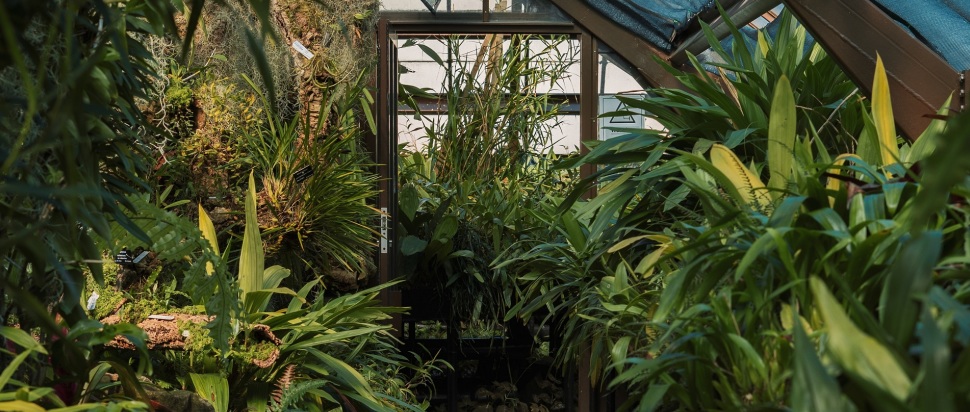The Skinny Guide to Glasgow's Green Spaces
If shopping sprees and bar crawls leave you with sore feet, pause and park yourself down in any of the city's legendary green spaces. From Highland coos to art museums, there're almost as many memories made in Glasgow's gardens as blades of grass
One of The Dear Green Place’s dearest, greenest places is Kelvingrove Park, a West End wonder as popular now as it was when it opened in the mid-1800s. The subway serves the park with stations Kelvinhall and Kelvinbridge, their names referring to the river that runs right through the landmark. Within, you’ll find the Kelvingrove Art Gallery and Museum, one of Scotland’s mightiest and most-attended attractions, containing a never-ending archive of paintings, sculptures and artefacts. You can head upstairs for an intimate viewing of Salvador Dali’s Christ of Saint John on the Cross, or sit in the foyer and try to count as many floating heads as you can. Beyond the bowling greens and across the bridge sits the Kelvingrove Bandstand, an open-air venue seating over 2000 gig-goers for acts as high-profile as The Pixies and Tom Jones.
The West End doesn’t stop there – follow the river North for the Glasgow Botanic Gardens. As well as containing thousands of specimens, and the UK’s national collection of tree ferns, the crown jewel of the Botanic Gardens is Kibble Palace. If you’ve got an appetite for carnivorous plants, this kingly greenhouse contains flora temperate and tropical. It’s also on the other side of the river from the community-organised Children’s Wood, an inner-city 'secret garden'.
Nature lovers need not idle in the North – Glasgow’s largest green space, Pollok Country Park, spans the Southside at over 300 acres. Other than the usual features of any good green space (wildlife gardens, woodland walks, riverside vistas, you know the type), Pollok’s herd of Highland cows are popular with visitors, sharing the grounds with the other year-round residents, the park ranger service. It's also home to the Burrell Collection, a museum built to house the donated archive of art collector William Burrell, displaying over 9000 artefacts from around the world and throughout history.
It’s also not far from Bellahouston Park. This land was used for the legendary 1938 Empire Exhibition, and once its buildings and exhibits closed, the sole standing Palace of Art remains as a fitness centre and Glasgow’s coolest work out spot. Nearby, find the Art Nouveau House for an Art Lover, built in the 90s based on turn-of-the-century plans by Glasgow’s architectural doyen, Charles Rennie Macintosh. The tremendous size of the land has attracted global sensations to give performances in Bellahouston, from The Cure to Kendrick Lamar. Also in the Southside, Queen’s Park has a royal selection of tennis courts and cricket pitches, a rose garden dedicated to the pantheon of Scottish poets past, and lends its name to the nation’s oldest association football club.
Over in the East End, Glasgow Green makes the site for TRNSMT, the city’s most star-studded music festival (headliner alumni include Radiohead and Lewis Capaldi) and though they may not have pulled in as many crowds, the historic parkland also hosted Bonnie Prince Charlie and James Watt. The People’s Palace is a bespoke museum, dedicated to chronicling the Glaswegian way of life and celebrating the population of the city. Turn east for Tollcross Park, then north for Alexandra Park, and bear true to Seven Lochs Wetland Park if you want to knock out the city’s natural beauty in one day.
Prefer not to stray too far from the city centre? There’s always the Hamiltonhill Claypits, where minerals were extracted to line the Clyde canals, which has become popular with bird-watchers due to its bridges and walkways, and the Glasgow Necropolis, conceived as Scotland’s response to Père Lachaise Cemetery, which was recently canonised in cinema, playing the part of Gotham City in Robert Pattinson’s Batman.
